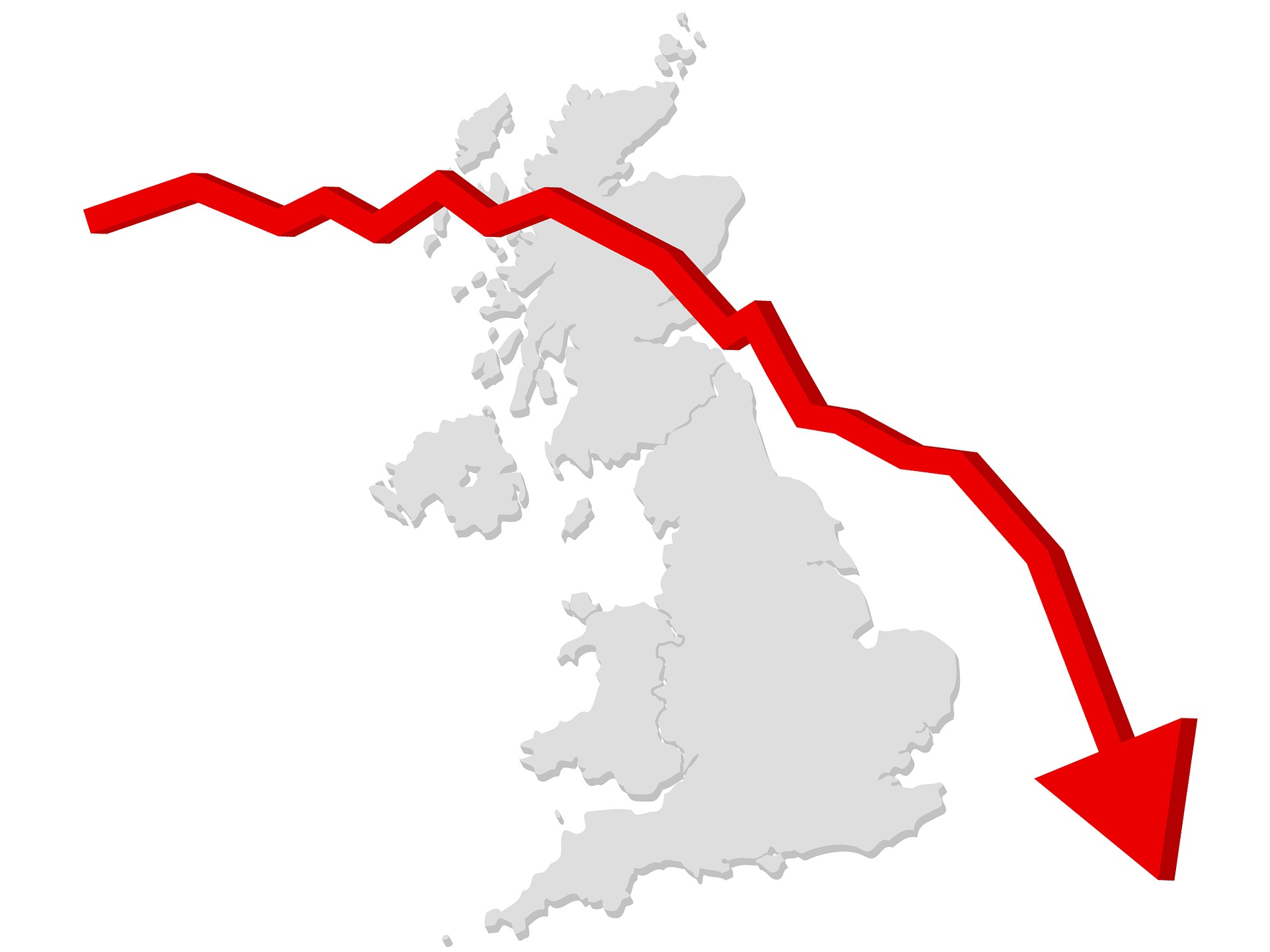The housing market in the UK has always been a focal point of discussion, particularly among potential homeowners, investors, and financial analysts.
Recent predictions by some of the country’s largest mortgage lenders have added a new dimension to these discussions.
Lloyds Banking Group, the UK’s most prolific mortgage lender, has recently forecasted a decline in house prices through to the year 2025. This prediction comes amidst a backdrop of higher borrowing costs, which have been cited as a primary reason for the slowdown in house sales.
According to Lloyds, house prices are expected to decrease by 4.7% this year (2024), followed by a further 2.4% drop next year. However, there’s a silver lining for homeowners and potential buyers.
The bank anticipates a recovery in 2025, with prices rising by 2.3%. This forecast aligns with the sentiment of other financial institutions, indicating a potential trend in the housing market.
Historical Context and the Impact of COVID-19

To understand the significance of these predictions, it’s essential to look at the historical context.
The UK housing market has seen its fair share of ups and downs, influenced by various economic, political, and social factors. The recent surge in prices during the COVID-19 pandemic was unexpected for many.
The demand for spacious homes increased as remote work became the norm, leading to a spike in house prices.
Current data suggests that the average house price in the UK stands at about £291,044, a figure that has remained relatively stable over the past year.
The Role of Interest Rates
The rise in interest rates has been a significant factor in terms of influencing the UK housing market. As it now stands, at 5.25%, interest rates are at their highest level for 15 years.
The trend to increase interest rates taken by the Bank of England in recent months, has been followed as a measure to address inflation and soaring consumer prices.
Consequently, borrowing rates, including those relating to mortgages, have seen a steep rise. The average rate on a 2-year fixed mortgage according to Moneyfacts, now stands at 6.24%.
Lloyds reported a significant pre-tax profit of £1.9bn for the third quarter of 2024, a substantial increase from the £576m during the same period last year. This profit boost is largely attributed to the rising interest rates, leading to increased costs for borrowers.
Yet, there’s a disparity in the rate at which borrowing rates are rising compared to savings rates. The average easy-access savings rate – a popular choice among savers – is currently at 3.21%.
This discrepancy has led to criticisms from various quarters, with claims that banks are profiting at the expense of ordinary people.
Add to that the fact that UK inflation is currently running at 6.3%, so that money in easy access savings is losing value in real terms by 3.09%, and it’s easy to understand why there is criticism.
Banks’ Perspective and Defence

The group chief executive of Lloyds, Charlie Nunn, has, however, defended the bank’s position. emphasizing that their commitment is to support its customers during these uncertain times.
He referred to a trend whereby more customers are transferring their money from current accounts to savings accounts in search of better returns.
Furthermore, the banks argue that the current economic landscape, characterized by inflationary pressures and global economic uncertainties, necessitates a cautious approach.
They believe that while borrowing rates have indeed increased, they remain competitive, ensuring that customers get value for their money.
Navigating the Current Landscape
For savers seeking higher interest rates, the current economic environment does present an opportunity.
The current scenario in the housing market and the broader financial sector underscores the importance of being informed, keeping up to date and making prudent decisions.
Whether you’re a homeowner, a potential buyer, or a saver, understanding the current market dynamics can help you to navigate these turbulent times.
For those looking to buy, it might be worth waiting to see how the market evolves. There is, for example, speculation that the ISA (Individual Saving Account) rules could be changed in the upcoming Autumn budget in November.
One of those changes is thought to be the raising of the current Lifetime ISA £450,000 cap, which would help first-time buyers purchasing higher costing properties.
For existing homeowners, it’s essential to understand that while there might be a dip in house prices, historical trends suggest they will recover over time.
For savers, easy access account interest is always likely to remain below the rate of inflation – a trend further exacerbated when the rate of inflation is high. It means that savers should explore various options to get the best returns on their investments.
Global Context and Economic Challenges

The housing market’s volatility is not unique to the UK. Globally, many countries are grappling with similar challenges, influenced by global economic shifts and geopolitical tensions.
For potential homeowners in the UK, it’s crucial to consider the broader global context when making decisions.
The UK’s exit from the European Union, commonly known as Brexit, has also played a role in the housing market’s current state. The uncertainty surrounding trade deals, immigration policies, and economic partnerships has had a ripple effect on various sectors, including real estate.
Additionally, global economic slowdowns, trade wars, and uncertainties in major economies like the US and China can exert downward pressure on house prices.
Such international economic challenges often lead to reduced foreign investments in the UK housing market, further dampening demand and prices.
The tightening of mortgage lending criteria worldwide, in response to economic uncertainties, can also make it harder for buyers to secure financing, leading to decreased demand and subsequently, a drop in house prices.










